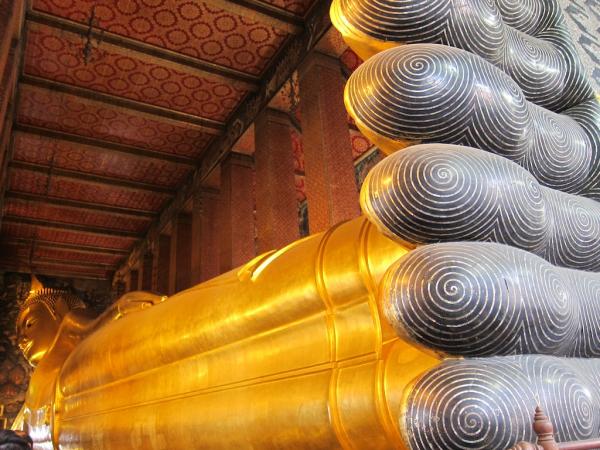Thailand and the Death Penalty
Thailand and the Death Penalty
⊙ Danthong Breen
On the one hand, the death penalty appears in the development of a formal structure of law in all countries. In Thailand the death penalty entered the code of law in 1352 AD and was extended further in 1435, with a distinct emphasis on offenses against the Monarchy, structures of the State, and religion. On the other hand, religions, especially in their early days, have shown a rejection of the death penalty. In the Angulima Sutra, the Buddha is represented as accepting as follower a repentant serial murderer, who had already killed 999 times. There are remarkably similar stories of Jesus, defending a woman destined to be stoned to death for adultery, and of Mohammad trying by many arguments to save a woman in a similar situation. There are tales of Buddhist monarchs banishing the death penalty for religious reasons and also of Hindu reigns of mercy. How does a country progress from the death penalty to abolition? It is a problem which troubles all abolitionists. At an individual level we have all had the experience of trying to explain to one person at a time why they should reject the death penalty.
From 1935 to the present day, the number of those executed in Thailand is 325 persons. Six persons have been executed in the last 10 years. Today the number of people condemned to death is 687 (618 men and 69 women). Of these 48 have completed all legal process; the remainder face judgement by the Appeal and Supreme Courts. For all those condemned to death an appeal for clemency is submitted to the King. In the past, we are told that he carefully considered each case, before granting or refusing commutation of sentence. However, for the past 4 years he has lived in hospital in a state of fragile health, and has been unable to deal with the details of requests for clemency. Prisoners awaiting a final decision on their fate are left for years in a no man’s land of indecision. Two government ministers who strongly support the death penalty, one the Minister for Justice, the other a Vice Prime Minister have been urging a limit to waiting time after which executions an proceed. Fortunately until now, the Department of Corrections has insisted that only a royal decision can authorise an execution, and the situation remains blocked. Besides, in a momentous move a royal commutation of sentence was granted in August of 2012 to all prisoners whose legal process had ended. No further explanation of the move has been given. The reprieve of 58 condemned prisoners who would already have been executed if forces favouring the death penalty had their way, was a clear message of intent which will hopefully put an end to further efforts to hasten executions.
More recently, the well known authority on the death penalty William Schabas reported a signgificant conversation: “On Tuesday, I met with Wanchai Rujjanawong, who is Director-General of the International Affairs Department of the Office of the Attorney General. He assured me that the last execution in Thailand had taken place” and that in a further six years Thailand would achieve the status of de facto abolitionist, attributed to countries which have not carried out an execution in ten years. He added that although there it no written decision to confirm his statement, he could be quoted.
While this is good news, it is hardly satisfactory. Neither the commutation of sentence in August, nor the assurance of the Attorney General, has been reported in the media. Reporting on royal action or decisions relating to the Monarchy is hazardous. The charge of lèse majesté is one of the most serious in the legal code, and its application is largely undefined. Here is the knot in the tangle of threads that relate to Thailand’s attitude on Capital Punishment.
In the period of absolute monarchy of Europe, all legal process related to the Monarch. While today we look on crime as an offence to the State, and criminal cases are labeled as the Offender vs the State , earlier monarchies saw crime as a offence against the person of the King. For this reason a relatively minor offence could incur Capital Punishment, because of the enormity of any offence to the Royal Person . On the other hand, pardon was a royal prerogative. While the criminal stood on the scaffold in a public place, everyone listened for the sound of a galloping rider who could bring last minute reprieve.
Since 1932 constitutional monarchy has replaced Thailand’s absolute monarchy, but the institution still has non-constitutional and unstated attributes which retain traditional attributes. On one occasion UCL held a seminar on the death penalty for government officials. Four political parties sent representatives, one of whom, from the majority party confided to me that Thailand must retain the death penalty as His Majesty must be seen to have power of life and death over his subjects. He made no mention of this interpretation in his public address. Nor have any other political or state officials ever made such a claim in my hearing. But the existence of hidden rules and attitudes is widely acknowledged and it is very likely that the belief in a royal prerogative persists.
The persistence of the death penalty and the reluctance to abolish it must have some such explanation. Politics is a power game, and the death penalty is the ultimate measure of power. The argument that the death penalty is an effective deterrent of crime is now discredited. The belief that the death penalty as an ultimate vengeance is owed to a balance of justice is displaced by a respect for life as the ultimate human right. The proposal that the death penalty is necessary to the victims of crime to make retribution for the injury is as false and empty as the tribal cry of past millennia, ‘an eye for an eye, a tooth for a tooth’. None of these relics of the past have part in a modern democratic state with an established system of justice. But competition for power persists everywhere, and in countries where law is a system of control rather than a guarantee of freedom for the people, the death penalty appears to be indispensible, as the ultimate threat to insubordination.
Imprisonment of Prisoners Condemned to Death
Until the end of 2012, all male prisoners condemned to death were permanently shackled. Such a practice was strongly condemned by the UNHRC, which ordered that the practice be stopped immediately and without further excuse. Finally, six years later, the shackles were quietly removed. What was considered essential to prison security, was suddenly abandoned, without announcement or reason given. This practice is typical of Thai prison administration. For the Thai population, what is out of sight is out of mind, and they would not have it otherwise. There are two prison systems in Thailand. In the one, the prisoners are well cared for by sympathetic wardens; there is quick response to their health needs. In this prison the primary aim of imprisonment is rehabilitation, and prisoners learn a trade, continue their education, and leave the prison with a loan to establish a new life. In the second prison system prisoners live in grossly overcrowded conditions, are treated with disrespect for their humanity, are lacking in many of the decencies of living, die if they are in ill health, and face savage beatings during the night watch in the prisons. The first prison system exists in the fantasy of government officials, the second can be researched in the accounts of present and past prisoners. Due largely to corruption of prison officials it appears impossible to control the availability of drugs in the prisons, and of mobile phones, tools of the drug trade. The latest attempt of control is a so-called ‘white prison’ policy, which establishes a gulag system of isolated prisons with the control of communications with relatives and the outside world. Formerly, relatives and friends could bring home cooked food and fresh fruit to supply the deficiencies of prison diet, and give books, or other reading material to a prisoner. Under ‘white prison’ policy, this is no longer possible. Worse still, workshops where prisoners could acquire skills, and earn small amounts, have been closed to block access to tools and inappropriate substances.
Recently, a master degree student of Chulalonghorn University has successfully defended a thesis with the improbable title, “Rehabilitation for Prisoners under Sentence of Death in a Human Rights Perspective: A Case Study of Bang Kwang Central Prison.” In fact the thesis reflects the anomaly of retaining a nominal death penalty which translates as an endless prison sentence. There is danger that, like the Philippines, Thailand will mindlessly slide into the appalling alternative of life imprisonment without parole, apparently legitimised by US practice, the ultimate criterion of human rights practice! In fact, life imprisonment without parole is a death penalty by old age or suicide, if that option can be achieved. There can be no justification, by any penal theory, other than for the criminally insane, of life imprisonment without parole. Of course, in Thailand the life sentence does not last for ever and hence the relevance of the Chulanlonghorn thesis. There must be a humane reform of sentencing for serious crime, with a clear maximum sentence, with revues at set stages, which set clear targets for programmes of rehabilitation, the only justification for imprisonment in modern criminology.
Finally, in Thailand we appear to have achieved a Thai solution to a Thai problem. There will be no offence to the structures of power such as might occur in abolition of the death penalty. Court imposition of the death penalty will continue, so that Thai citizens will always be reminded of where power resides. Meanwhile the death row population will be moderated by annual royal pardons. And in course of time, who knows, perhaps the death penalty may disappear world wide. One may wonder whether the final country to join abolition may be Thailand.



